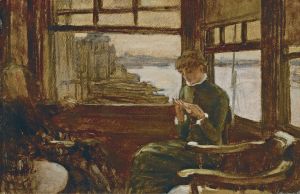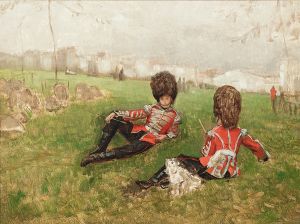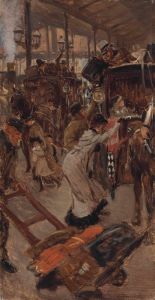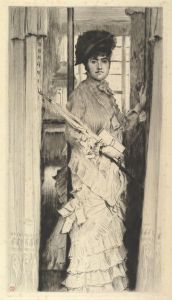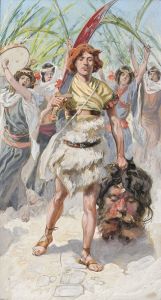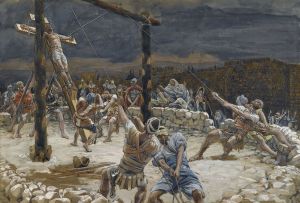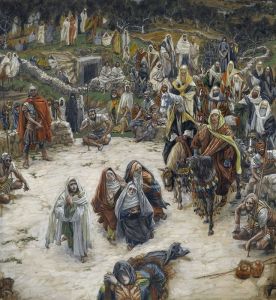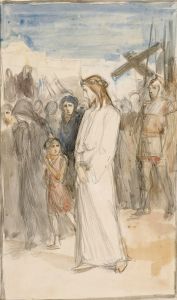
Good Friday Morning; Jesus in Prison
A hand-painted replica of James Tissot’s masterpiece Good Friday Morning; Jesus in Prison, meticulously crafted by professional artists to capture the true essence of the original. Each piece is created with museum-quality canvas and rare mineral pigments, carefully painted by experienced artists with delicate brushstrokes and rich, layered colors to perfectly recreate the texture of the original artwork. Unlike machine-printed reproductions, this hand-painted version brings the painting to life, infused with the artist’s emotions and skill in every stroke. Whether for personal collection or home decoration, it instantly elevates the artistic atmosphere of any space.
James Tissot, a French painter and illustrator, is known for his detailed and evocative works depicting biblical scenes. One of his notable paintings is "Good Friday Morning; Jesus in Prison," which is part of his extensive series on the life of Christ. This series, created between 1886 and 1894, is known as "The Life of Our Lord Jesus Christ" and consists of 350 watercolors that illustrate various events from the New Testament.
"Good Friday Morning; Jesus in Prison" captures a poignant moment in the Passion of Christ. The painting depicts Jesus Christ during his time in custody, following his arrest in the Garden of Gethsemane and before his crucifixion. Tissot's work is characterized by its meticulous attention to historical and cultural details, reflecting his extensive research and travels to the Holy Land to ensure accuracy in his depictions.
In this particular painting, Tissot portrays Jesus in a somber and reflective state, emphasizing his humanity and the suffering he endured. The setting is a dark, confined space, likely intended to represent the prison where Jesus was held. The use of light and shadow in the painting highlights Jesus' figure, drawing the viewer's focus to his expression and posture, which convey a sense of resignation and inner strength.
Tissot's approach to this series was influenced by his conversion to Catholicism in the late 19th century, which inspired him to create works that were both devotional and educational. His aim was to bring the stories of the Bible to life in a way that was accessible and relatable to contemporary audiences. The detailed and realistic style of his paintings, combined with his commitment to historical accuracy, has made his series a valuable resource for both art historians and religious scholars.
"Good Friday Morning; Jesus in Prison" is part of the collection housed at the Brooklyn Museum in New York. The museum acquired the entire series of Tissot's biblical watercolors in 1900, and they have since been an important part of its collection. The paintings are often displayed in exhibitions that explore themes of faith, history, and art.
Tissot's work, including "Good Friday Morning; Jesus in Prison," continues to be appreciated for its artistic merit and its ability to convey the emotional and spiritual depth of the biblical narrative. His dedication to capturing the essence of these sacred stories has left a lasting impact on the world of religious art.





